Design Discussions: Heavy Rain Vs. The People – Forfeiting Control to the Director (A footnote)
July 13th, 2010
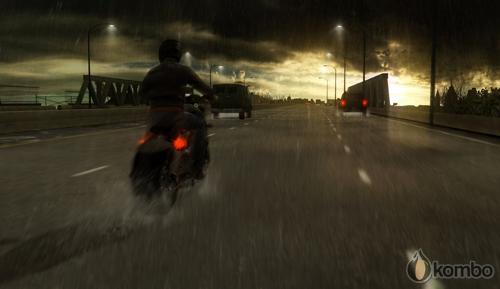
[‘Design Discussions’ is a new, regular-occurring column for Kombo by Daniel Johnson, explicating on elements of game design through a case study approach. This piece is a footnote to the initial column Deconstructing the Video Game: Three Pillars of Design for Interactive Drama (Heavy Rain), so it is recommended that you read the prior article first.]
With contextual interactivity, players are somewhat at the mercy of the director. The director is the person who assigns all points of interactivity and the time frame in which they can be initiated, rather than the player. This system coerces players into cooperating with the narrative, and although a handful of people seem to outright refuse this system, it’s a far more persuasive, even-handed approach towards director control than the alternatives. Let us assess the issue of persuasion with traditional video game narrative techniques and conclude with a contrast to Heavy Rain.
Complete Control – In-game Narrative
Broadly speaking, in recent years, in-game narrative has proven to be a very organic and effective way to deliver supplementary narrative and contextualisation. The sound logs in Dead Space which play over gameplay are one such example commonly used throughout the industry (also seeBatman: Arkham Asylum and Bioshock). Despite the successes in conveying minor information, in-game narration is an unreliable way of delivering important information to the player as it only leads the horse to water. As anyone who has ever played with the gravity gun while sitting through one of Alyx’s talky scenes in Half-life 2 can attest, there’s no guarantee that players will cooperate or pay attention, particularly when they’re given the liberty of retaining their regular ability set.
No Control – Cutscenes
So how does one make the player cooperate? By taking complete control away through the form of a cutscene. Cutscenes are embroiled in their own infamy in that they can feel as though the designer is taking over, and in some cases, dominating the interactive experience. Players can get particularly antsy during unskippable or overly long cutscenes, which is why they must be well implemented such as a reward for an extended period of play or to conclude/open a chapter or scene. Even though cutscenes are loathed by some, they are an infallible means of control for developers to steer the narrative.
Partial Control – “Disabled Scenes”
A recent hybrid of the cutscene and in-game narrative (perhaps slanting closer to the latter), are the scenes where the majority of the player’s mechanics are disabled besides those which allow the player to observe (walking, camera movement). Batman: Arkham Asylum‘s introduction scene did this particularly well as Batman and company wheeled a bound Joker into Arkham Asylum, giving air time to the Joker’s menace. These scenes walk the line between the two other techniques.
Conclusion
The problem with these techniques is that it creates rifts of uneven control. One minute you’re playing the game, maybe absorbing some in-game narrative on the side, then you’re passively taking part in an interactive cutscene, which prompts a cutscene with no control whatsoever and then you’re free to keep playing. The gears of interactivity are constantly switched back and forth that inevitably creates a consciousness which removes the player from the experience.
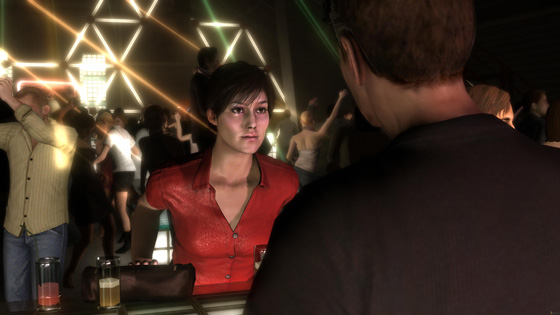
In Heavy Rain, these bumps are smoothed out and the level of control remains constant throughout. There are scenes where you can walk around and explore, and scenes which are closer to interactive cutscenes, yet the disparity between the two is minimal. Heavy Rain also trains the player to always be ready for action from the beginning which allows the switch to be more seamless. This is all very similar to the principles behind Dead Space‘s narrative (the in-game HUD and narrative) where breaks in immersion are avoided. Because the level of control remains consistent, Heavy Rain is capable of creating narrative experiences which are highly immersive, but also avoids the contrived nature of games like Dead Space.
Design Discussions: Deconstructing the Video Game: Three Pillars of Design for Interactive Drama (Heavy Rain)
July 13th, 2010
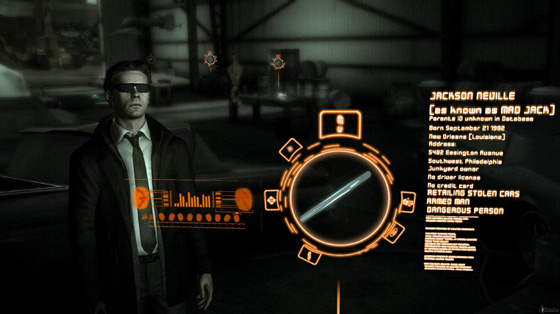
[‘Design Discussions’ is a new, regular-occurring column for Kombo by Daniel Johnson, explicating on elements of game design through a case study approach. Today he debuts this column with the first in a series of posts exploring Heavy Rain.]
To wit: Heavy Rain is a radical revision of the medium, changing, and in many cases eschewing, video game-defining principles which have remained largely unchanged since the arcade era. If it weren’t for such a deep-seated departure from stagnant norms, Heavy Rain would not be capable of being such a competent piece of drama, let alone an emotionally engaging one. It’s quite surprising actually that such a revisionist approach would be met with such a gripping context on debut, but it only makes Heavy Rain‘s message all the more potent and worthy of critical discussion.
As is the case with properties which attempt to elicit an emotional response, I think many writers have, quite naturally, first conferred with their personal side. In which case this article and the accompanying columns will attempt to take the opposite approach by deconstructing elements of design, thereby allowing us to have a clearer understanding of Heavy Rain‘s unique direction.
Deconstructing the Video Game: Three Pillars of Design for Interactive Drama
Heavy Rain‘s backend is an inversion of most typical gameplay systems. For one, Heavy Rainemploys a contextual-based input system where the player’s actions are built into the environment or the scene, initiated by following on-screen cues which mimic the real life action. This works differently to most video game systems which begin with the basic mechanics (usually walk, attack, grab, etc.) and then stack vertically as jump, punch and then “jump and punch while in the air” mechanics are added. Because Heavy Rain relies on a contextual system of interactivity, it’s also a single tier system as opposed to most games which contain the aforementioned layers of vertically-stacked mechanics. There is only one “mechanic” in Heavy Rain, so to speak. That’s walk. Heavy Rain is built around walk and interactivity is mapped horizontally to the environment or scene. In this single tier, contextual system, basic familiarity with the controller and on-screen interface are the only requisites for play.
Heavy Rain, as a very atypical type of game which through its unique design has circumvented many of the issues facing modern interactive narrative, forces us to reassess the definition of a game. So then, I purpose this question: what is a game and does Heavy Rain meet this definition? For the sake of this argument, a game is a win condition and a set of rules for the player to meet that condition. Does Heavy Rain have both a win state and rules? Well, it certainly has rules, despite their differences from most traditional games, however, the win state argument is very unclear. There are two possible conclusions here, either Heavy Rain has no win state or the win state is the ratification of the narrative. That is, you win by participation, only your inputs may vary the narrative. Participation is a win state, but it’s a condition which deconstructs the intrinsic crux that all games operate on: skill. So then, is a game without skill a game at all?
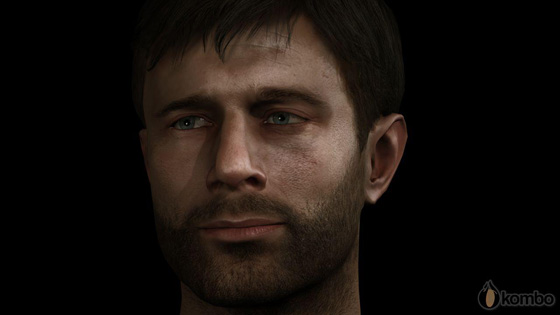
Definitions aside, there’s a lot to unpack there, so let’s distill my explanation into 3 succinct bullet points. Heavy Rain deconstructs games by the following three means which I have ranked by order of importance:
- The Absence of Skill
- Contextual Input Over An Established Ability Set
- Single Tier Complexity
Let us now turn to how each point works to deconstruct the former view of video games and, in its place, re-build a system for interactive drama.
The Absence of Skill – More than Narratives of Mastery and the Removal of Ludo Narrative Dissonance
Without skill, Heavy Rain forgoes the previous skeleton of video game design almost completely. Games, in the traditional sense, those in which are skill-based, orientate around systems of mastery. That is, games facilitate the player’s learning and eventual mastery of a set of rules (known to players as their abilities). This means that video game narrative abides by a documentation of mastery. For instance, the protagonist’s journey of development or the increasing peril of a threatening situation. Prince of Persia: The Sands of Time and Halo are two respective examples of such narratives. In Prince of Persia, the narrative works with mastery in that the Prince develops as an adult (conveyed by his banter and actions regarding his female accomplice Farah) as the player masters the rules of the game. Halo‘s narrative works within a framework of mastery in that challenges of mastery are substantiated by the intensity of the war which peaks at the game’s conclusion. These are fine examples of narratives which work harmoniously with the properties of the medium.
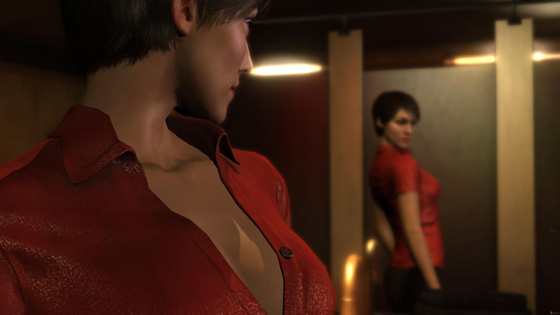
This is all well and good, but don’t you see what’s happening here? If narrative and game are to work harmoniously together (as in Halo, Portal, Prince of Persia and Super Metroid, for instance), then the narrative potential is constricted by mastery. The alternative is that skill creates conflict and separation between these two parts (see further below). By marginalising skill, Heavy Raindoesn’t abide by a narrative of mastery and as a result there isn’t an imbalance between the rules of the game and the narrative of the game (also known ludo narrative dissonance). I’m far from an expert on contemporary video game narrative, so I won’t proceed to run through a myriad of examples pertaining to ludonarrative dissonance, but rather the two examples below should highlight the case quite clearly.
The Psychological Advantage of Meeting the Win State
By removing skill, Heavy Rain breaks loose from the expectation that work yields reward, in turn breaking the psychological advantage players formerly had over game narrative. Video games are absolute systems and thereby struggle with interpreting grey subject matter (unlike literature and film which are rich in ambiguity). As hard as developers try to make video games grey, they’re effectively pushing a boulder uphill against that aforementioned friction known as skill. Players know this, which is why grey game narrative mostly fails. Player’s know that if they meet the win state then the grey narrative (moral choice, for instance) cannot legitimately impact upon them.
(There are exceptions, like Execution, where the player’s assumptions are preyed upon to shocking effect, when it fails, however, (for instance, when the game forces the player to make a morally wrong action), it’s pure deceit and therefore derided by the gaming community).
Mass Murder
Even when developers are successful at developing a good narrative within the constrains of a skill-based system, ludonarrative dissonance is still very likely to occur, as was much discussed withUncharted 2. Despite Nathan Drake’s warm charisma, throughout Uncharted 2 he murders hundreds, maybe thousands of people—he’s effectively a mass murder. Uncharted 2 is a 3rd person shooter which means that Drake/the player needs to shoot a large number of targets in order to train themselves for each trial. Yet, at the same time, Drake’s killing spree conflicts with his “good boy” characterisation.
Contextual Input Over An Established Ability Set – Common-place Application, Immersion and the Director’s Control
Most traditional games centre their mechanics around a couple of core abilities from which they build. Super Mario Bros; jump, Gears of War; 3rd person shooting, cover, Street Fighter; offensive attacks, defensive manoeuvres are a few examples. These abilities, while only a limited segment of the avatar’s complete repertoire of possible actions, are the abilities most relevant to the core premise, be it jumping, shooting, fighting, etc.
In an entirely contextual system, abilities are not bound to foundation mechanics, so the possibilities of potential actions are practically infinite, only bound by the relevancy to the environment. This system is an ideal match for Heavy Rain which isn’t a shooter, platformer or fighter, but instead an interactive drama which requires the player to pull off a broad range of actions. For this reason, players of Heavy Rain will do things they’ve never done before in a video game. Simple things like sitting in a chair, playing with your kids or signing your name.
It’s interesting to observe that Heavy Rain isn’t a primitive re-rooting of video games fundamentals, but is instead incredibly well realised. In fact, some of the points made here aren’t necessarily inherent to the design (of contextual systems), but rather examples of Heavy Rain‘s sharp ingenuity. Interaction in Heavy Rain is based around mimicry of real life actions through the medium of the controller. The weight that the imitation of actions through the controller and on-screen representation (the animation corresponds to the completion of the action) have towards the immersiveness is impossible to quantify, but, speaking in generalities, one would assume that mimicry would create a much more engrossing experiences as the simulation is closer to real life than arbitrary button presses which bear little to no correspondence to the on-screen actions. IfHeavy Rain weren’t a contextual based system, then these custom inputs would not be possible (probably because they would destroy pace) and the connection to the drama would be lost.
The most important quality of a contextual system is that it gives power to the director, since the director dictates the points of interactivity. This, in turn, transforms the environment from a playground to a vision. Such a system forgoes the traditional means of narrative (in-game narrative, cutscenes, etc), which results in a game with a constant degree of control, rather than one which adds or removes levels of control when the director feels the need to talk. We shall explore this point individually and with more detail in a later column.
Single Tier Complexity – Accessibility
The upheaval of the traditional approach to game design changes the playing experience immensely. The most obvious point is that it compresses complexity down to on-screen prompts, which makes Heavy Rain a very accessible game to non-players. The nature of the prompts scale according to how you answer a mandatory question which asks how familiar you are with video games at the start of the game. For Heavy Rain to be a legitimate piece of drama, it ought to be playable by anyone, otherwise skill rears its ugly head back in and new players are marginalised and excluded from certain parts of the experience.
Some of the criticisms of Heavy Rain have been that not all choices are made available to the player and therefore Heavy Rain does not fully deliver on the proposition “How far would you go for someone you love?”. This criticism is most relevant to the action sequences which play a large role in determining the fate of the characters (and the respective avenues for choice), yet are based on reaction, ie. skill. This criticism is legitimate as it shows how skill can be injected back into Heavy Rain‘s skill-removed system to potential detriment of the narrative.
Conclusion
As we’ve established, Heavy Rain deconstructs the video game by devaluing skill and all of the systems relating to skill. In its place is an input system which gives the director control over interactivity and allows for an infinite range of actions. Being a narrative-driven game, the single mechanic, walk and its accompanying contextual input, allows for an accessible experience which does not hinder newer players from choice.
The next article will be a footnote to my previous point on directive control, before I look at the way Heavy Rain toys with player roles.
Enjoyable for all Audiences: Klonoa and House of the Dead: Overkill
April 29th, 2010

This is something of a special take on my regular ‘Play Impressions‘ feature. Klonoa and House of the Dead: Overkill, despite their differences in content, are great examples of games which channel the ethos that the Wii was founded on: accessible gameplay that breaks down the barriers between beginner and seasoned players. Both of these titles are of genres of relatively low complexity which further adds to their expansive appeal. I will focus on how their designs are logical to players and ultimately very successful games.
Klonoa
Klonoa is a remake of the 2.5D PSone platformer Klonoa: Door to Phantomile for Wii. The platforming borrows mechanics from Yoshi’s Island and Wario Land, but alters and combines them in a refreshing way. Like Yoshi, Klonoa has a flutter move where he can temporarily keep himself afloat in mid-air and like Wario, Klonoa can pick up enemies and launch off them to gain extra height. When these mechanics are combined in succession, Klonoa comes into its own, offering an emergent technique for more capable players which allows Klonoa to travel great horizontal and vertical distances without touching the ground.
Klonoa can also toss enemies in front of him or at objects in the back and fore grounds, allowing for some nifty puzzles. In fact, I’ve never played a game which has so dynamically implemented 3D environments on a 2D plane. It’s all quite impressive the way paths spiral around and Klonoa shifts to layers which were previously a part of the back/fore ground. As with the combination of jumping mechanics, it’s when the backgrounds and foregrounds interconnect and loop around to create multilayered puzzles where Klonoa excels.
It’s the bridging of separate, easy-to-understand constituents which make Klonoa a joy to play for experienced and inexperienced players. In fact, Klonoa is an ideal game for children; I would have loved to play his game growing up. The story in particular deserves special mention in this regard. Unlike Jak and Daxter or Rachet and Clank who play on youthful, adventure-seeking archetypes, Klonoa and his blue-ball sidekick Huepo are adventurous but reserved, displaying a natural pure-heartedness rarely seen in video games. The sense of friendship shared between the two is heartfelt and the conclusion to their tale is one of the most touching I’ve experienced a video game—less we forget this is a production made for children. Playing Klonoa had reminded me of the importance of developing games for a young audience. However, even if you’ve long since past primary school, as a fan of 2D platformers, I can’t recommend this under-appreciated gem enough. The best platformer on the Wii bar Mario.
House of the Dead: Overkill
There is surprisingly very little to say about House of the Head: Overkill from a mechanical standpoint. As I mentioned in my rail shooter guide on Racketboy, Overkill employs a simple combo system where flawless, no-miss kills tally a tiered combo system with each multiplier assigned to over-the-top names like like ‘psychotic’ and ‘goregasm’. Shots are divided into head shots and body shots.
Players can now choose a two weapon loadout prior to each mission, supported by a shop system where players can tweak and add weapons to their arsenal. In many respects, the two weapon loadout—arguably the only “new” addition to this installment, if you’re into series progression and all—injects a strategic dynamic into the core gameplay since players can switch weapons to conserve ammo or for tactical efficiency. There’s a degree of strategy in pairing up clunky, rapid-fire or standard weapons depending on your strengths. It quickly becomes apparent though that the shotgun, with its wider target area—as represented by the large reticle—awesome power and lack of ineffectiveness when shot into the distance, is the most efficient weapon for high score chasing, and once you’ve maxed it out, you’ll almost never use the other weapons. Personally, I’m hardly a high score chaser, but the scoring system in Overkill, due to it’s simplicity and prevelance in the UI, is more apparent than in prior games, which piqued my interest. High scores are rewarded with cash, so it all ties back to the upgrades system which is scrimpy at best, ensuring that you’ll need to play every level at least 3 times before you earn enough dough to max out all the weapons.
The player also has a substantial health bar which on depletion offers the option of sacrificing half your score to continue. Branching paths have been removed entirely which give more focus to the narrative—and with plenty of health packs, slow motion prompts, grenades and ‘save the civilian’ moments, Overkill is quick to orientate the players concentration towards accurate shooting and the rewards subsequently accumulated from the combo system. The novel grindhouse presentation may appear to distract from possible lacking amenities, but this couldn’t be further from the truth. All components of House of the Dead: Overkill: the linear progression, health bar, cash system, in-game trinkets, UI, all work to consolidate accurate shooting: the game’s core gameplay premise. In addition to the excellent production values and comedy-driven narrative (the latter of which, I think anyone could enjoy), Overkill, just like Klonoa, is a fantastic game for both seasoned and new players alike. I think that it’d also be a good introductory game for players wanting to further explore the rail shooter genre as it focuses so heavily on accurate shooting: an integral skill required in these games.
Overkill also provides incentive for players to keep working on their accuracy with a standard story mode, the option to add more mutants and a final “director’s cut” version which adds a significant amount of content per level. The final pay off is the ability to dual wield with too Wiimotes which is a rather handsome reward. Again, this plugs into the accuracy element of the game.
Additional Readings
The Making of the House of the Dead – British Gaming



 Game Design Companion: A Critical Analysis of Wario Land 4 - $7.99
Game Design Companion: A Critical Analysis of Wario Land 4 - $7.99 Level Design: Processes and Experiences
Level Design: Processes and Experiences Speed Boost: The Hidden Secrets Behind Arcade Racing Design - $5.99
Speed Boost: The Hidden Secrets Behind Arcade Racing Design - $5.99 Adventures in Games Analysis: Volume I - $5.99
Adventures in Games Analysis: Volume I - $5.99







